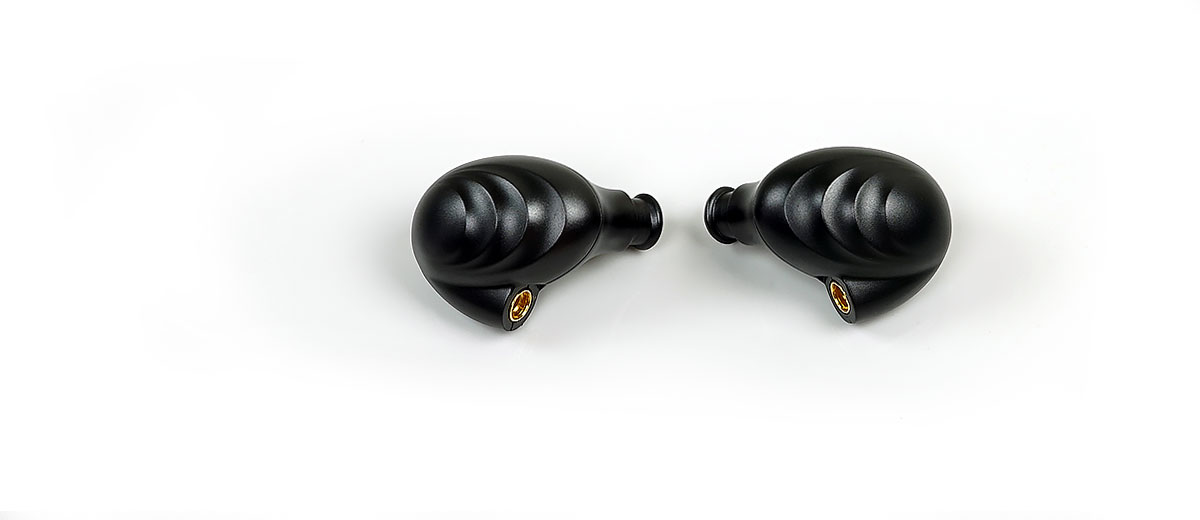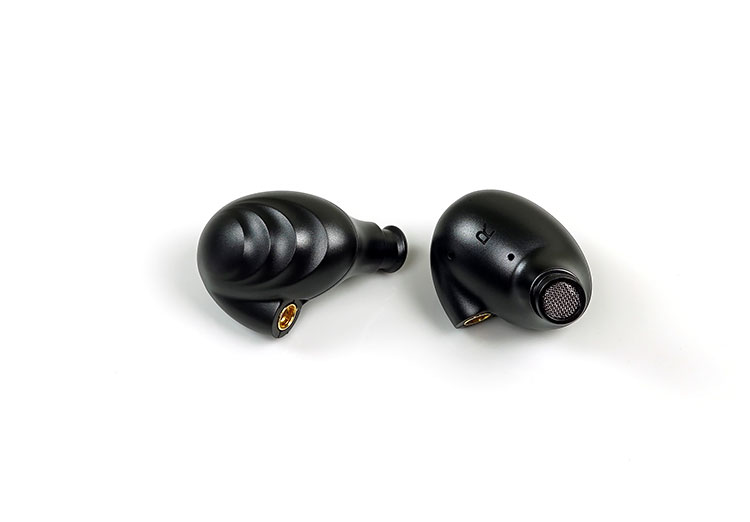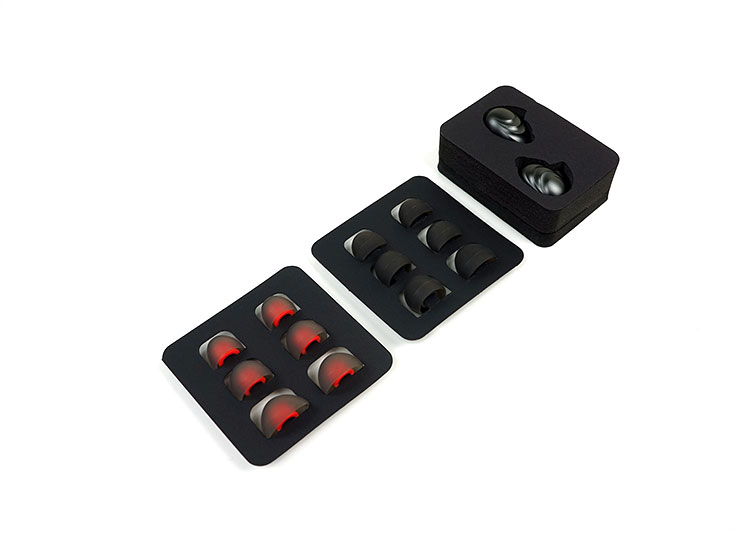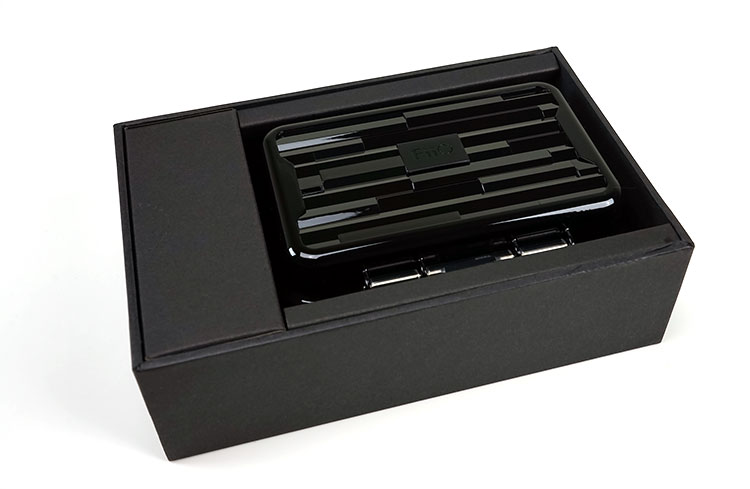The FiiO F9 is a hybrid universal IEM using a single 9.2mm dynamic driver and a dual balanced armature design. It is priced at $99.99.
Disclaimer: The FiiO F9 sent to us is a sample in exchange for our honest opinion in this review. We thank FiiO for this opportunity.
To learn more about FiiO reviews on Headfonics you can click here.
Note, this review follows our new scoring guidelines for 2020 which you can read up on here.
FiiO’s rollout of their IEM line-up continues to be fast and furious with the launch of the F9 in July 2017.
Having visited them a few weeks ago and seen how they operate I am honestly not that surprised. They guys work really hard and what you see being launched was conceived months if not years in advance.
In fact, as I review this I am just back from their F9 Pro launch which is their flagship IEM. The F9 and SE edition nestles just in behind the Pro model priced at $99 with the Pro at $139.99.
These are not exorbitant prices and if the F5 price to performance ratio is anything to go by then the F9 range could well make more expensive IEMs look a bit silly.
After all, this is a hybrid triple driver IEM at just under $100. I can only think of 1MORE’s triple driver, also at $99 than competes. Sadly, I do not have that one, it went to Mike for review.
What Is The Pitch?
The F9 is FiiO’s first hybrid driver IEM that fits into the balanced detachable “Infinity Sound” vision product range launched earlier in 2017. At the time two units were rolled out, the single dynamic driver F5 being the other one.
Technical Pitch
The F9 is a single 9.2mm dynamic driver, dual balanced armature design. Its a fairly typical crossover with the dynamic driver covering the low to mids and the dual BA covering the upper mids and highs.
Balanced
Consistent with the Infinity Sound pitch, FiiO has made the F9 detachable with a choice of 2 cables, balanced and single ended 2.5mm and 3.5mm. As with the F5, this keeps the F9 nicely within the eco-system of products FiiO have been launching that have included balanced outputs such as the Q1 mark II, X3 Mark 3 and the AM3a X series amp module.
Hi-Res
In continuation also with their Audiophile pitch, the F5 comes complete with “Hi-Res” audio certification from the Japan Audio Society which is an almost ubiquitous label for most modern headphones and sources in the market these days and up there with “Made for iPod”. Interestingly, unlike the F5, the F9 is not being pitched as “Made for iPod” so it does not carry the MFi certification.
Build
Form Factor
The form factor on the F9 reminds me a little of Fidue’s flagship A91 in look and feel. This is an oval or egg-shaped aesthetic with smoothed or rounded finish that is very comfortable in the hand. there are no sharp corners anywhere.
Water
The design is apparently inspired by ripples in the water and how they expand out from a single drop in a calm pool. The craftsmanship is exquisite and flawless for this price point.
FiiO also contends that the ripple design adds an additional level of durability to the F9 shell as well as maximize the internal space of the body. As such it is not a huge IEM despite the long 9.2mm driver and roughly on par with RHA T series and certainly a lot smaller than the hybrid triple driver IT03 from iBasso.
Terminations
The body of the F9 is terminated at the bottom with a fairly short nozzle that uses a metal mesh at the tip and has a decent lip for holding the supplied tips. At the top, it arcs into a set of MMCX connectors designed to receive the cable over the ear.
Materials
External
Externally, the F9 uses a very well finished CNC aluminum material split into two halves with a smoother underbody and the rippled inspired face plate. The smoothness comes from the hand polishing as well as the additional sandblasting and anodized finish.
The final look comes in two colors, officially red and black. Now I received the “black” one but it is not a pure black for me, rather a gunmetal or charcoal type hue. I much prefer this over pure matte or piano black type finishes which tend to show fingerprints and dust a lot more.
Internal
Internally, the dynamic driver design has been ‘upgraded’ from the titanium of the F5 to a semi-crystalline PEK. This is a polyether ketone high-performance plastic and is used as a polymer nanocomposite material for the F9 driver. In theory, if applied correctly this is a faster sounding, tougher and lighter material than the titanium driver of the F5.
Cables & Connectors
Unbalanced
The F9 comes with two detachable cables with gold-plated MMCX connectors. The first is the unbalanced or stock black TPE coated cable 1.2m in length and terminated with a straight 3.5mm gold plated stereo jack. It is a 24 strand braided OFC cable with TPE used to protect from unnatural coloring from oxidization, corrosion, and aging. This is pretty much the default cable for those using an unbalanced DAP or 99.9% of all smartphones.
Remote & Mic
Note, because of the lack of MFi for the F9 the unbalanced cable does not have a specific iOS to Android switching function but it does have an inline remote and mic module.
The performance of the remote is patchy. For iOS, it will play and pause but no volume control on iOS10 on an iPod Touch. For Android Nougat 7 on an LG G6, I did get full volume control and play and pause on the stock music player. However, I only had volume control using the HiBy Music app. Mic functionality was fine and I had no issues with in-call use during the testing.
Balanced
The second cable is a 2.5mm balanced 1.2m MMCX terminated cable which is also made with a TPE jacket. It houses a superior SPC wire to the OFC of the F5. This is a 1.2m braided black PET jacketed 4-core cable which splits into 2 beyond the y-split. It is terminated with a 2.5mm TRRS gold plated plug.
The F9 balanced cable is much softer than the F5 balanced cable with better pliancy and lower microphonics. The good news is if you have an F5 you can simply swap them over as both are MMCX terminated.
Hooks
Both cables are finished with a reasonably long memory retentive hook. It retains its overall shape though as opposed to user-customized shaping. It will bend and flex to your needs but once off your ear, it will snap back to its original curve.
MMCX
One final note, the MMCX connection is strong with a healthy snap when put in place. The rounded body of the F9 makes them slightly tricky to get a grip to ease them off so do not apply do much pressure when taking them off.
Just a gentle wiggle will ease them off. I found a slight twist and bias pressure outwards in one motion snapped the cables off very easily. If you pull back with force you won’t be able to get them out and worse you could damage them.
Comfort & Fit
Comfort and fit are often an anecdotal or a personal affair but I did find the F5 to fit me a little bit better in terms of seal than the F9. Your own experience may be slightly different but the venting and shallower nozzle for me combined with the provided silicone tips did ok but not amazing.
The over the ear cable experience was excellent though with very little microphonics creeping up with either cable into my ear. Comfort wise, I can have no complaints. The rounded curves of the F9 made this a very smooth insert and it stays fairly secure in my ear. I just want a tiny bit more depth on the insertion to get a rock solid seal. Something I may be able to achieve with 3rd party foam tips.
Tips
The supplied tips are slightly different to the F5. Though both the F5 and F9 supply single bore silicone only tips the ones that come with the F9 differ a little. One batch has a nice red translucent hue with a solid red stem and the others are more like the F5 with a plain black coating.
The difference between the red and black is the width of the opening of the single bore. The red is wider and should sound a bit cleaner and more open. The black ones are narrower so they might sound a little darker and with more low-end response.
Accessories & Packaging
The F9 is pretty similar to the F5 in terms of packaging and accessories and that’s a good thing in my book at this price point. The retail box is again a back to black which I personally prefer over the older mixed color boxes (white background).
Inside, you get a very neatly arranged single waterproof hard case that contains both the tips and the driver units. To the base, you have a small cardboard box containing the two detachable cables. The case itself is big enough to take both cables, a selection of tips and the drivers. There is plenty of space to spare for silicone bags, a 3rd cable etc.
The tips come in similar cardboard carriers as the SIMGOT EN700 Bass. This means they will fall away eventually which is a shame but they look nice out of the box. The drivers are encased in a very thick and well-insulated foam tray, also inside the hard case.
The F9 has the same new case as the F5. It reminds me of Peli cases with a nice reflective angular design though it is not quite as durable. However, the element sealing is a real bonus. FiiO is now selling it as the HB1 as a separate accessory.
Sound Impressions
Tonality & Presentation
The F9 paints a fairly musical but enjoyable presentation with a mild bass elevation, slightly dipped lower mids, and a generally raised vocal presence. It finishes off the curve with a fairly articulate but slightly peaked lower treble response which extends well into its brilliance region before falling away.
You could argue that the response curve is a little V-shaped with that lower mids dip but I don’t find it overly done, perhaps veering more to a gentle u-shape. So while you get a little more emphasis from 50-100Hz mid-bass and a none too shabby sub-bass curve it is not pushing down on the mids and overly warming up its tonality. I can’t call this a dark sound signature due to the more prominent top end. As such, the F9 is a relatively coherent sounding for a hybrid IEM with excellent clarity, especially at this price point.
Staging on the F9 is not too bad on depth actually. It doesn’t have a gut-wrenching sub-bass presence but it extends well. Left/right separation is naturally balanced with a dipped lower mids placing instrumental positioning a little behind the more forward sounding vocal presence. Top end extension is very good and the F9 is capable of some very good sparkle and headroom.
Bass
I always prefer the natural response of a dynamic driver compared to a BA and the F9 will give that natural sound. Despite the size of the 9.2mm driver though FiiO has elected to avoid a guttural “depths of hell” reach and instead deliver something a little more balanced. The curve is a very gentle rise and holds from 20-80/100Hz with a very slow and linear drop from 100Hz right down to the mids around 1k.
What you get is some sub-bass presence with decent power but nothing that tips the balance too far in favor of the low-end. The last thing you want is a dark and muffled v-shaped response which for me kills clarity and enjoyment and the F9 has none of that.
FiiO has started the response dip rather early on the F9, around 90Hz to 100hz rather than 150-200hz meaning by the time it hits the mids its a good 10dB lower. Excellent for the prevention of bass bleed and lower pitched instrumental clarity though a touch lean sounding.
The mid-bass from 80-100Hz is where you will find most of the elevation in the F9’s low-end. This means a full sounding impactful response, something ideally suited to modern RnB, pop, and certain EDM styles. It’s pace is actually not too bad for a dynamic driver of this size. Whilst not as quick paced or as tight as BA I think FiiO have done a good job keeping it from sounding bloated and sluggish sounding.
Mids
Mids are relatively dipped up to 1-2k in comparison with the low-end so instrument positioning is a bit further back. The articulation though is very good with the pacey dual BAs picking up the signature around 1-2k
Instrumental timbre is accurate to slightly bright depending on the range of the instrument. I find the lower mids orientated guitar work to lack a little presence and weight at times but nothing overly brittle. Conversely, percussion instruments are snappy, energetic and more in your face with a slight partial overtone and odd harmonic bias with that lower treble peak coming in at 7k.
Vocal positioning will ultimately depend on the pitch as the F9 gets a kick in energy (presumed crossover point) and elevation between 1-2k and remains fairly energetic right throughout to about 7-8k.
Lower pitched male vocals will sound a little further back compared to female vocals, especially soprano pitched which sound a good deal more forward. Pleasingly, low pitched vocals did not sound muffled or drowned out from the mid-bass response and sounded clean and clear.
Treble
Treble on the F9 is a touch uneven but it is not the peakiest or the most strident I have heard. The energetic rise from the lower mids does peak right around that 7k marker a lot of people can be quite sensitive too.
However, the decay is quite short so sibilance is not exaggerated nor is there an abundance of odd harmonic bias and irritating sharpness to its sound. If anything it is just lacking a little body in and sounding a little brittle.
Using the wider bore stock tips will accentuate the lower treble presence more than the narrow bore tips and if you happen to have foams this will tame it a bit more. You can EQ it also, something around 4-6dB will give you a more balanced if slightly laid back sound to the F9 top end.
It is a personal preference thing at times. I find I enjoy the sparkle that F9 can give me adjusting for around -2dB on the X7ii EQ 8K bar but too much adjusting creates a little bit too much of a suck out leaving the sound a bit “boring’. With a V-shape, no matter how mild, you do need that bass/treble contrast for the excitement factor.
Click on page 2 below for Matchability & Comparisons










